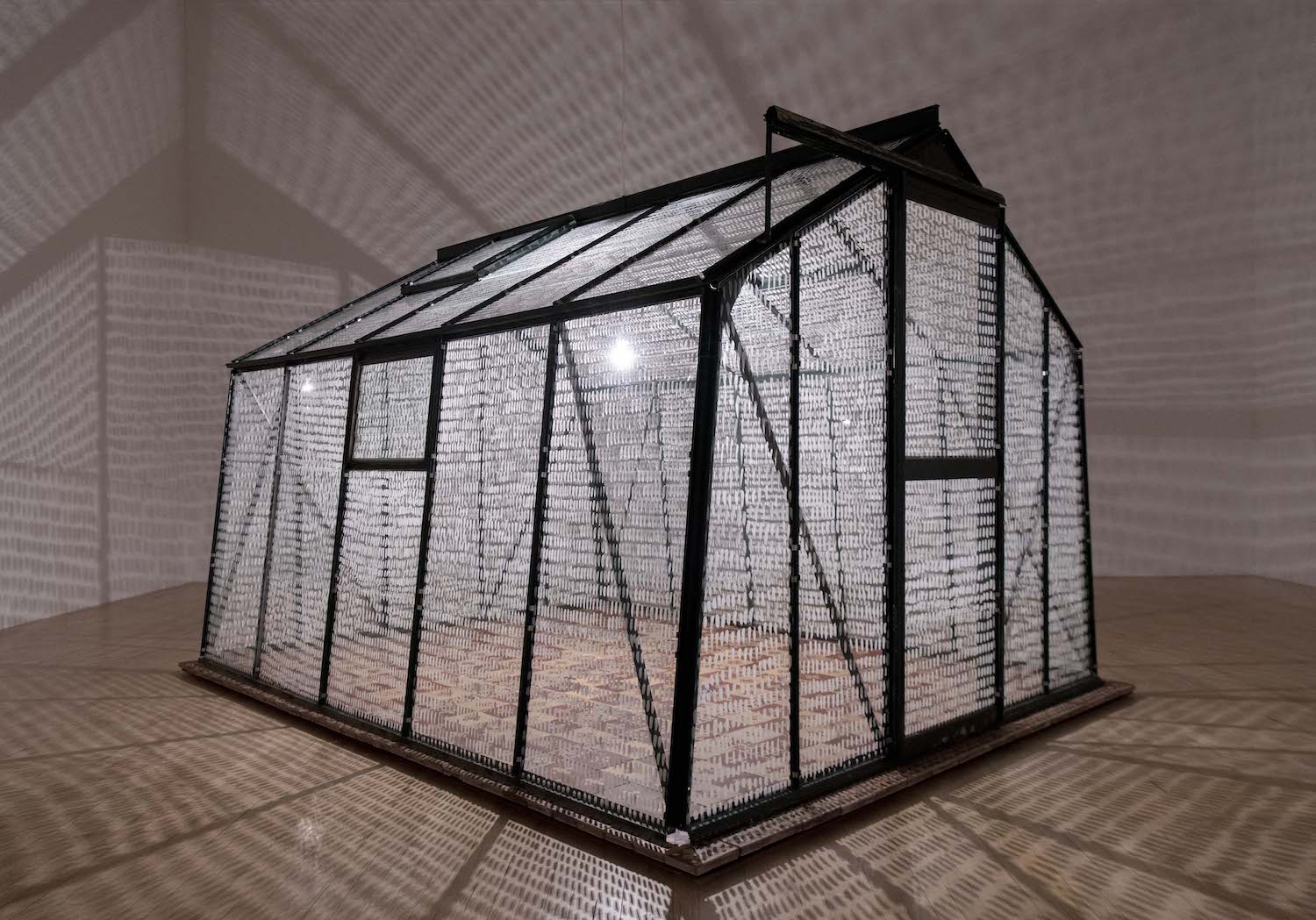Your cart is currently empty!
OUTSIDE LA: Cornelia Parker at Tate Britain Small Island Energy

Cornelia Parker’s landmark retrospective at Tate Britain journeys through her multimedia work to narrate a country willingly stuck in small-island-energy. Parker (b.1956) examines objects by considering how they change when their associated value is disrupted, destroyed or dismantled. The juxtaposition between large scale installation and Parker’s accompanying text, dissecting her process and interest, creates an exhibit that is subtly scathing of the geographical entity it is taking place in.
The exhibition begins with Thirty Pieces of Silver (2015), a sculpture of over a thousand pieces of low hanging flattened silver, suspended from the ceiling and gathered in plate-like rounds. It’s a visually pleasing entryway into Parker’s installation work.
The second gallery delves into Parker’s political intrigue with two neighboring sculptures Embryo Firearms (1995) and Embryo Money (1996). Her partnering text tells us the firearm is a cast metal sculpture of a gun from the first step in its manufacturing process that she acquired from visiting a factory in Hartford, Connecticut. The second piece is a metal disc from the Royal Mint, Pontyclubn, Wales. A coin before its currency, value and power are asserted for mass circulation via the addition of someone’s face. Parker’s words, like object poems, make the work accessible whilst ensuring her intrigue and intentions are not misconstrued by the viewer.

The screening room plays a selection of Cornelia Parker’s film: a Palestinian father and son weave crowns made from thorns in Bethlehem, machinery makes and throws out poppies at a factory for the UK’s remembrance day, a trio of videos on UK politics includes Parker’s submission as the official artist for the general election in 2017. This depicts a dizzying display of the fast pace chaos of the 90 day election cycle and British tabloids. This is followed by a film of halloween celebrations in New York, a week before the election of Trump, partnered with a video of Trump supporters outside Trump Tower in the piece American Gothic (2017).

There’s a disturbing lack of sound that carries through much of the later exhibit. It begins with the echoing noise of the machinery in an empty warehouse in the video of the poppy factory in Richmond. This leads into the installation War Room (2015) a huge tent constructed of suspended strips of material that poppies are cast out of. In Perpetual Canon (2004), marching band instruments are flattened and hung in a round, the orchestral noise instead comes from the many shadows of the instruments on the walls.

The silent presence felt is also a result of the tension created from the spaces Parker visits in order to make her work: from visiting gun making factories, border control in Texas, to a poppy making factory. A photograph of clouds was taken with a camera Parker borrowed from the Imperial War Museum that belonged to Rudol Hoess, the commandant of Auschwitz. Parker describes looking through the same lens as a mass murderer; the resulting photograph is uneasy and sinister. Her work exposes the most unsettling parts of society, and at times it feels at the expense of herself with the heavy process underlying the artwork.

The last piece Island (2022) is a glass garden shed. A bulb inside slowly lights up and dims out like breaths. White lines are painted on the glass using chalk from the White Cliffs of Dover, a quintessential English landmark. Dover is also a politicized transportation entrypoint and departure for the UK, the use of this chalk alludes to the country’s obsessive anti-immigration policies. The white lines keep the light in and the heat away, as Parker would do to her shed as a child to protect tomatoes from the summer heat. The covered shed signifies the UK looking inwards, alone, a small island. Parker is addressing a post-Brexit England not wanting to be part of Europe; a prevalent topic amongst artists and art institutions attempting to evolve and reimagine understandings of Europeanness as the UK chooses a more distant relationship with the continent.
Cornelia Parker at Tate Britain is an immersive critique of the frequent devastation humanity causes, through her intrigue at seemingly arbitrary objects. As the exhibition closes in on the UK with Island, the overarching message that lingers is that not only is small island energy in the UK detrimental and sickly, but nonsensical.
The exhibition runs until October 16th.